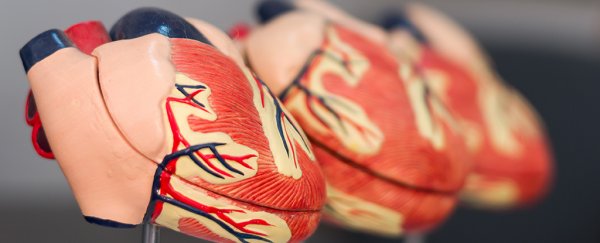Tiny, simplified organs grown in the lab – known as organoids - can potentially make drug research and development a much quicker process; now scientists have produced a human 'body-on-a-chip', comprised of several living tissues at a microscopic scale.
It's being called the most sophisticated lab model of the human body yet, and it could prove invaluable in working out the possible dangers and benefits of medicines before they get used on actual human beings.
The tiny organoids – approximately one millionth the size of their organic counterparts – are effectively a test bed for researchers looking to develop drugs and fight disease. It's the latest in a long series of advances in being able to reproduce minute models of human body parts in laboratory conditions.
Similar set-ups of interconnected organoids have already been used to accurately replicate findings on drugs found to be too toxic to remain on the market; the method can catch problems not spotted in tests carried out in animal testing or on cells cultured in petri dishes.
The new scaled-up version introduces more organ models, improving the chances of catching dangerous side effects.
"Creating microscopic human organs for drug testing was a logical extension of the work we have accomplished in building human-scale organs," says medical scientist Thomas Shupe from the Wake Forest Institute for Regenerative Medicine (WFIRM).
"Many of the same technologies we have developed at the human-scale level, like including a very natural environment for the cells to live in, also produced excellent results when brought down to the microscopic level."
Shupe and his colleagues used what they describe as a "toolbox of biofabrication techniques" to create the miniature organs, which include representations of the human brain, heart, liver, lungs, testis, vasculature, and colon.
Each organoid began with a tiny sample of human tissue cells and stem cells, which were then engineered into tiny organs with shelf lives of at least 28 days. They mimic many of the functions of the real organ they're copying, and can include blood vessel cells, immune cells and the fibroblasts of connective tissue.
Half a dozen of the scaled-down organs were assembled in close proximity to represent a simplified human body, allowing the researchers to see how different parts of our anatomy might react in combination when certain drugs are applied. That insight can be invaluable.
"We knew very early on that we needed to include all of the major cell types that were present in the original organ," says biomedical engineer Aleks Skardal, from Ohio State University. "In order to model the body's different responses to toxic compounds, we needed to include all of the cell types that produce these responses."
The organoids the team has produced can give 3D life to tests that would have previously taken place with 2D tissue samples, providing experts with a more comprehensive and realistic idea of the impacts that a particular drug can have.
With only an estimated 1 in 5,000 drugs making it from preclinical trials to the market, there's plenty of scope for the process of drug development to get more efficient as well as safer.
We could get new drugs faster, at a lower cost, and without as much (or any) need for animal testing, if realistic human simulations like this super-small organoid-based one can be more fully developed.
"The most important capability of the human organ tissue system is the ability to determine whether or not a drug is toxic to humans very early in development, and its potential use in personalised medicine," says urologist Anthony Atala, from WFIRM.
"Weeding out problematic drugs early in the development or therapy process can literally save billions of dollars and potentially save lives."
The research has been published in Biofabrication.
